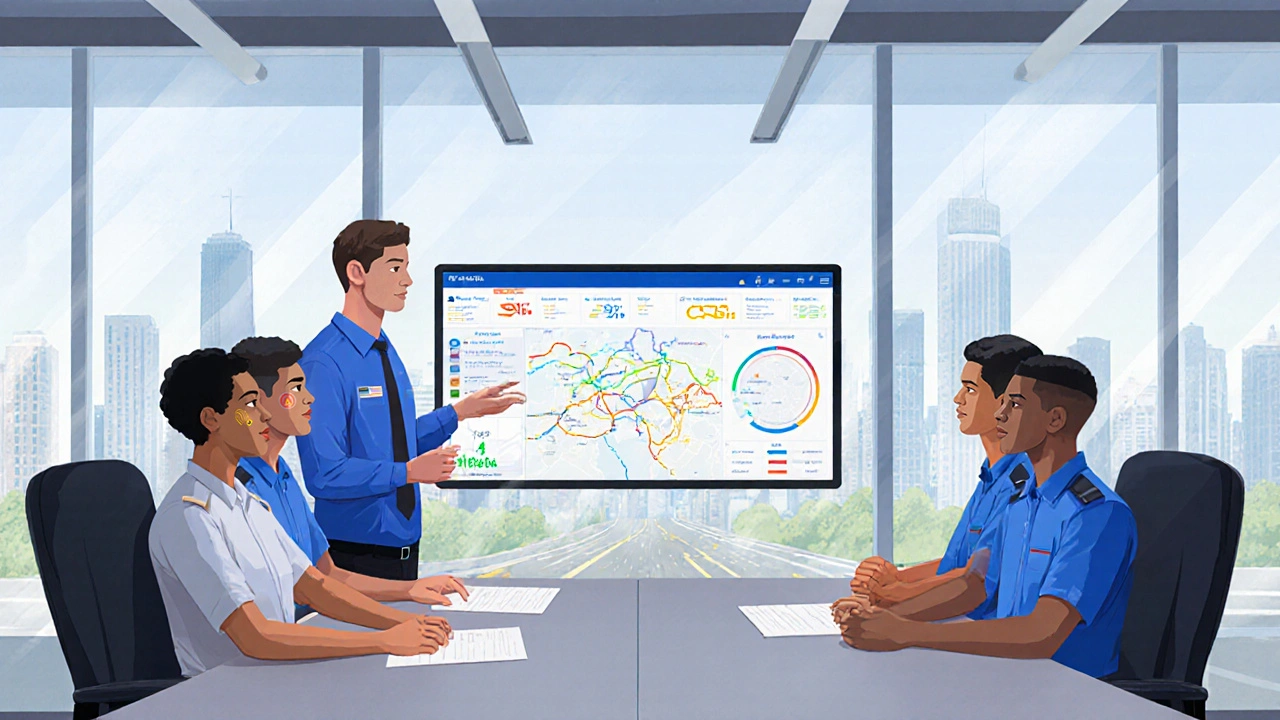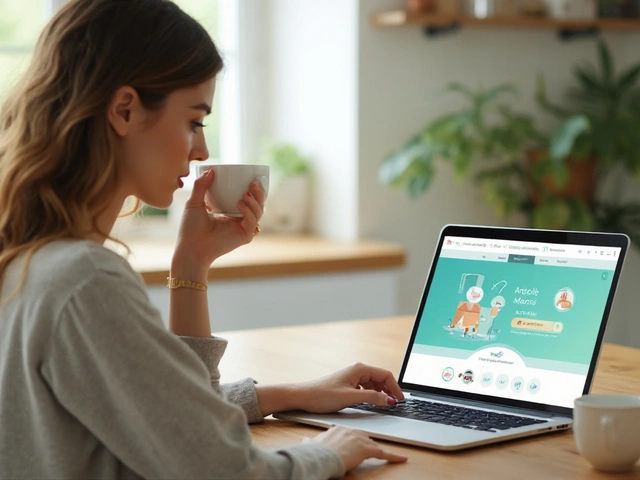
Health September 27, 2025
Understanding Shift-Work Disorder and Its Impact on Driving Safety
Key Takeaways
- Shift-Work Disorder (SWD) disrupts the body’s natural clock, leading to chronic sleep loss.
- Drivers with SWD are up to 2.5 times more likely to be involved in a crash.
- Fatigue impairs reaction time, decision‑making, and visual tracking-core skills for safe driving.
- Simple habits like strategic napping, light exposure, and consistent sleep windows can cut risk dramatically.
- Employers can lower fleet accident rates by redesigning shift patterns and offering education.
Shift-Work Disorder is a sleep‑wake cycle condition that affects people who work irregular hours, especially nights and rotating shifts. It is characterized by excessive daytime sleepiness, insomnia, and reduced performance during wake periods. In the United Kingdom, about 7‑10% of night‑shift workers meet clinical criteria for SWD, according to a 2023 occupational health survey.
When you combine SWD with the demands of operating a vehicle, the consequences can be severe. The human body relies on a circadian rhythm-a roughly 24‑hour internal clock-to regulate alertness, hormone release, and motor skills. Disrupting that rhythm throws off reaction speed, visual acuity, and even the ability to judge distances.
How SWD Undermines Driving Ability
Three physiological pathways explain why shift workers become unsafe behind the wheel:
- Sleep Deprivation: Even a single night of less than six hours of sleep reduces psychomotor speed by 20%-the same impact as a blood‑alcohol level of 0.05%.
- Misaligned Circadian Timing: Driving during the biological night (roughly 2am-6am) hits the body’s “low‑alertness trough.” Studies from the University of Leeds show that lane‑keeping variance doubles during that window for SWD patients.
- Cognitive Fatigue: Prolonged wakefulness depletes glucose in the prefrontal cortex, leading to poor decision‑making and slower hazard perception.
These effects compound. A 2022 UK transport study found that drivers with SWD made 1.8seconds slower to brake in an emergency simulation, increasing crash probability by roughly 30%.
Accident Risk: Numbers That Matter
Statistics paint a clear picture. The Department of Transportation (DOT) in the United States, cited by the European Road Safety Observatory, reports the following per‑million‑vehicle‑miles (MVM) crash rates:
| Work Schedule | Crash Rate (per MVM) | Relative Risk |
|---|---|---|
| Day‑time (standard) | 4.2 | 1.0× |
| Night‑shift (no SWD) | 5.8 | 1.4× |
| Night‑shift with SWD | 10.5 | 2.5× |
In plain English: a driver suffering from SWD is more than twice as likely to be involved in a crash compared with a colleague on a regular schedule.
Legal Landscape and Employer Obligations
Many countries treat fatigue‑related incidents as a form of accident risk that employers must manage. In the UK, the Health and Safety at Work Act obliges employers to assess risks from shift patterns, while the European Union’s Working Time Directive caps weekly hours at 48unless a worker opts out.
Transport companies face additional scrutiny. The UK’s Driver and Vehicle Standards Agency (DVSA) requires operators to demonstrate “fatigue management policies.” Failure to do so can result in fines of up to £20,000 per offence and, in extreme cases, suspension of operating licences.

Practical Strategies for Safer Driving
If you’re a shift worker who drives-whether commuting, delivering parcels, or operating heavy‑vehicle fleets-these steps can keep you safer on the road:
- Strategic Napping: A 20‑minute nap before a night shift can restore alertness as effectively as a full night’s sleep for short‑haul drivers.
- Light Exposure: Bright light boxes (5,000-10,000 lux) for 30minutes at the start of a night shift help shift the circadian clock, reducing drowsiness.
- Consistent Sleep Window: Even on days off, aim for a regular bedtime within a 2‑hour window to stabilise the rhythm.
- Hydration and Nutrition: Low‑glycemic meals keep blood‑sugar steady, preventing the “crash” of energy that mimics fatigue.
- In‑Vehicle Alerts: Modern telematics can detect lane deviation and issue audible warnings when driver attention wanes.
For long‑distance drivers, the “2‑hour/15‑minute” rule-take a 15‑minute break after every two hours of driving-has been shown to lower crash risk by 22%.
What Employers Can Do to Reduce Risk
Companies that run fleets have a powerful lever: they control shift design. Evidence‑based recommendations include:
- Forward‑Rotating Shifts: Move from night → evening → day rather than the reverse. This aligns better with the body’s natural tendency to lengthen, not shorten, sleep periods.
- Limit Consecutive Night Shifts: No more than three nights in a row before a recovery day.
- Provide Rest Facilities: Dedicated quiet rooms enable drivers to nap safely during mandated breaks.
- Education Programs: Briefings on sleep hygiene, signs of fatigue, and the legal responsibilities reduce dangerous “push‑through” behavior.
Companies that have adopted these measures report a 15‑30% drop in accident claims within the first year.
Future Directions: Technology and Policy
Wearable sensors that track eye movement and heart‑rate variability are becoming affordable for commercial drivers. Integrated with fleet management software, they can predict when a driver is entering a fatigue zone and automatically schedule a safe stop.
Policy‑makers are also looking at mandatory “fatigue risk assessments” for all high‑risk transport sectors, similar to fire‑safety audits. If implemented, such standards could bring the UK in line with the Scandinavian model, where fatal crash rates among shift‑working drivers are 40% lower.
Frequently Asked Questions
How can I tell if I have Shift‑Work Disorder?
Typical signs include chronic insomnia during scheduled sleep times, excessive daytime sleepiness lasting more than three months, and difficulty staying alert during work hours, especially at night. A formal diagnosis usually requires a sleep study and a questionnaire completed by a medical professional.
Is napping before a night shift enough to stay safe?
A short 20‑minute nap can boost alertness, but it does not replace a full night of sleep. Combine napping with other strategies-bright‑light exposure and a consistent sleep window-to achieve the best protection.
What legal consequences could an employer face for ignoring fatigue?
In the UK, regulators can issue fines, enforce remedial actions, or suspend operating licences. In severe cases where negligence leads to fatalities, civil lawsuits may follow.
Can medication help with SWD symptoms?
Prescription stimulants (e.g., modafinil) are sometimes used, but they must be prescribed after a thorough medical evaluation. Non‑pharmacological approaches-light therapy, sleep hygiene, and shift redesign-remain first‑line treatments.
How does Shift‑Work Disorder differ from simple fatigue?
Simple fatigue is a short‑term response to occasional sleep loss. SWD is a chronic condition that persists despite attempts to obtain sufficient sleep, driven by a misaligned circadian rhythm.
Write a comment
Items marked with * are required.






13 Comments
Bradley Fenton September 27, 2025 AT 23:55
Thanks for laying out the facts on shift‑work fatigue it really hits home for a lot of us night drivers.
Wayne Corlis October 5, 2025 AT 23:55
Ah, the age‑old romance between mankind and the relentless ticking of the industrial clock, where we proudly sacrifice our primal need for darkness in exchange for a paycheck, and then wonder why our brains falter when the moon hangs high, as if the universe owes us a 24‑hour lullaby, but no, the very laws of physics are indifferent, and the circadian rhythm, that elegant internal metronome, is merciless when we yank it out of sync, so it is no surprise that reaction times slip just as our coffee levels dip, yet we continue to blame “bad drivers” for accidents, ignoring the quiet tyrant of sleep deprivation lurking in the passenger seat, and we proudly claim that “hard work” is a badge of honor, while the data quietly shows a 2.5‑fold increase in crash risk, a number that would make any rational mind pause, but pause we do not, because the market demands perpetual motion, and regulatory bodies toss vague recommendations like confetti, leaving the weary night owl to gamble with his own life and the lives of strangers.
Kartikeya Prasad October 13, 2025 AT 23:55
So you’re telling us a 20‑minute nap can “restore alertness” – wow, next you’ll say water is wet 😏. Well, congrats on discovering the obvious, but at least you gave us a table to stare at while we sip our instant coffee 😅.
HARI PRASATH PRASATH October 21, 2025 AT 23:55
i cant beleive u think a nap is magic its just a short break however its not a replacment for real sleep . the real issue is schedule design not quick fixes .
Andrew Miller October 29, 2025 AT 22:55
Another reminder that we’re paid to be exhausted.
Brent Herr November 6, 2025 AT 22:55
It’s beyond pathetic that corporations keep pushing workers into these hazardous patterns while pretending they care about safety. If you value human lives, redesign those shifts now or face legal consequences.
Julius Adebowale November 14, 2025 AT 22:55
agree corporate greed trumps safety
KISHORE KANKIPATI November 22, 2025 AT 22:55
Let’s remember that change starts with dialogue – open ears, open minds, and a willingness to try those light‑box hacks and strategic naps you mentioned, because a safer road benefits everyone.
Thomas Ruzzano November 30, 2025 AT 22:55
While I appreciate the optimism, we can’t ignore that our own country’s drivers often outperform those abroad. Still, adopting proven European fatigue policies could lift our standards even higher.
Ellie Chung December 8, 2025 AT 22:55
Honestly, if you’re still using “strategic napping” as a buzzword, you’re missing the point – the system is broken, not the workers.
Sophia Simone December 16, 2025 AT 22:55
On the contrary, the premise that short naps suffice disregards the extensive body of chronobiological research indicating that only full sleep cycles can adequately restore neurocognitive function. Therefore, policy should focus on structural shift redesign rather than superficial fixes.
Juan Sarmiento December 24, 2025 AT 22:55
Great points all around! Remember, if you’re on a night route, a bright‑light exposure session at the start can really boost your alertness – think of it as a power‑up before the long haul.
Sadie Speid January 1, 2026 AT 22:55
Keep those habits consistent, teammates! Hydration, low‑glycemic snacks, and those 15‑minute breaks every two hours will keep you sharp and safe on the road.